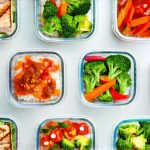The holidays are a time for joyful connection – sharing laughter, creating memories, and indulging in delicious food with loved ones. However, for individuals managing overactive bladder (OAB) or other urinary concerns, the festive season can also bring anxiety about symptom flare-ups triggered by common holiday foods and beverages. Many traditional dishes contain ingredients known to irritate the bladder, such as caffeine, alcohol, citrus fruits, spicy seasonings, and artificial sweeteners. The challenge lies in navigating these culinary traditions while still enjoying the spirit of togetherness and savoring a festive meal without worry. This article aims to provide practical guidance and inspiring recipes for creating bladder-safe holiday dishes that everyone can enjoy, proving that dietary restrictions don’t have to mean sacrificing flavor or family appeal.
The key to successful bladder-friendly holiday cooking isn’t about deprivation; it’s about informed substitution and mindful ingredient selection. It’s also about understanding individual triggers – what bothers one person may not bother another. This means paying attention to your body’s signals and adjusting recipes accordingly. We’ll explore how to modify classic dishes using bladder-friendly alternatives, focusing on minimizing irritants while maximizing flavor and ensuring a delightful culinary experience for everyone around the table. Ultimately, this is about feeling confident and comfortable throughout the holidays, allowing you to fully participate in the festivities without concern.
Navigating Traditional Holiday Foods: Identifying & Replacing Irritants
Many beloved holiday dishes contain ingredients that can exacerbate bladder symptoms. Understanding these common culprits is the first step toward creating a more bladder-friendly menu. Caffeine found in coffee, tea, and chocolate, acts as a diuretic, increasing urine production and potentially leading to urgency. Alcohol, too, is a significant irritant due to its similar diuretic effect and potential for inflammation. Citrus fruits (oranges, lemons, grapefruit) and tomatoes contain high levels of acidity which can irritate the bladder lining. Spicy foods, while flavorful, often contain capsaicin, another known bladder irritant. Finally, artificial sweeteners – prevalent in many holiday desserts and beverages – have been linked to OAB symptoms for some individuals.
Replacing these ingredients doesn’t necessarily mean sacrificing taste or tradition. For example, herbal teas can substitute coffee or black tea; sparkling cider offers a festive alcohol-free alternative; pear or apple juice can be used instead of orange juice in recipes; mild seasonings like herbs and spices (excluding chili powder or cayenne pepper) can provide flavor without irritation; and natural sweeteners like maple syrup or agave nectar can replace artificial ones. The goal is to find suitable alternatives that maintain the essence of a dish while minimizing potential bladder triggers. It’s also important to consider portion sizes – even bladder-safe foods can cause issues if consumed in excessive amounts. If you’re looking for more recipe ideas, explore these bladder-safe recipes with everyday ingredients.
Planning ahead and communicating with family members about dietary needs are crucial. Explain your considerations without making it seem like a burden, emphasizing that you want to enjoy the holidays together while maintaining your well-being. This collaborative approach fosters understanding and allows for adjustments to be made collaboratively, ensuring everyone feels comfortable and included. Don’t hesitate to bring a bladder-safe dish to share, demonstrating how delicious dietary restrictions can be!
Building a Bladder-Friendly Holiday Menu: Sample Dish Ideas
Creating a complete holiday menu that caters to bladder health is entirely achievable. Let’s consider some sample dishes and modifications for common festive meals. For appetizers, swap out spicy dips for hummus with cucumber sticks or a cheese and cracker platter using mild cheeses. Instead of cranberry sauce made with excessive sugar and citrus, opt for a homemade version sweetened with maple syrup and incorporating pear puree.
For the main course, roasted turkey is generally bladder-safe, but avoid basting it with acidic marinades. Serve it with mashed potatoes prepared with almond milk instead of dairy (for those sensitive to lactose) and steamed green beans seasoned with herbs. Consider replacing gravy made from a tomato base with mushroom gravy or a simple pan sauce using broth and herbs. Dessert options can include pear crumble sweetened with maple syrup, pumpkin pie made without excessive spices, or apple crisp using a cinnamon-oat topping. Remember to prioritize hydration, as adequate fluid intake helps dilute urine and reduce bladder irritation. Staying hydrated is key – consider pairing your meal with these hydration meal pairings with mild spices.
A fantastic example of a modified classic is Sweet Potato Casserole. Instead of the traditional recipe containing brown sugar and often citrus zest, consider this version: roast sweet potatoes until tender, mash with a small amount of maple syrup, cinnamon, nutmeg and a touch of almond milk. Top with a pecan crumble made from oats, pecans, and a bit of coconut oil – avoiding excessive sweetness or irritating spices. This offers the comforting texture and flavor profile without the bladder-aggravating components.
Adapting Classic Recipes for Bladder Health
Adapting beloved family recipes requires some creativity but is incredibly rewarding. Start by identifying potential irritants within the recipe and brainstorming suitable replacements. For example, if a stuffing recipe calls for cranberries, consider using chopped apples instead. If a gravy uses tomato paste, replace it with mushroom broth or a roux-based sauce flavored with herbs. Don’t be afraid to experiment! Small changes can often make a significant difference in reducing bladder irritation without compromising the overall flavor of the dish.
When modifying recipes, focus on minimizing acidity and reducing spice levels. Consider using milder versions of seasonings – for instance, Italian seasoning instead of chili powder. Experiment with different herbs and spices to enhance flavor without irritating the bladder. Remember that individual tolerances vary, so taste-test frequently during preparation to ensure the dish is both delicious and well-tolerated. For inspiration on incorporating mild flavors, see these tips for cooking with low-oxalate greens.
A helpful tip: document your modifications! Keeping a record of successful substitutions allows you to easily recreate bladder-friendly versions of your favorite recipes in the future. This also helps identify which ingredients are particularly problematic for you, allowing for even more tailored dietary adjustments.
Mindful Portion Control & Hydration Strategies
Even bladder-safe foods can contribute to symptoms if consumed in excessive quantities. Portion control is therefore essential during the holidays. Encourage smaller servings and mindful eating – savoring each bite rather than overindulging. This allows you to enjoy the flavors without overwhelming your bladder.
Hydration is equally important. While it might seem counterintuitive to drink more fluids when managing OAB, adequate hydration actually dilutes urine and reduces irritation. However, avoid consuming large amounts of liquid right before bed or leaving for an event. Space out fluid intake throughout the day rather than drinking a lot at once. Water remains the best choice for hydration, but herbal teas can also be included as part of your daily fluid intake. To further support healthy habits, consider these daily flow management exercises.
Avoid diuretics like alcohol and caffeinated beverages altogether or limit their consumption significantly. Be mindful of hidden sources of caffeine – chocolate, some flavored yogurts, and even certain medications may contain it. Planning ahead and knowing what to expect in terms of food and beverage options can help you stay on track with your bladder-friendly strategy throughout the holiday season.
Decoding Food Labels & Hidden Irritants
Many seemingly innocuous foods contain hidden irritants that can trigger OAB symptoms. Learning to decode food labels is a valuable skill for managing dietary restrictions. Pay close attention to ingredient lists, looking for potential triggers like citric acid, artificial sweeteners (aspartame, sucralose), caffeine, and spices. Be aware that ingredients may be listed under different names – for example, “malic acid” is another form of acidity similar to citric acid.
Manufacturers often use clever marketing tactics to disguise unhealthy ingredients. Terms like “natural flavoring” or “fruit juice concentrate” can mask hidden sugars or acids. Always read the entire ingredient list carefully, even if the product claims to be healthy or low-sugar. If you’re concerned about inflammation, these benefits of turmeric may offer some relief.
Be particularly cautious with processed foods, pre-made sauces, and condiments. These often contain high levels of sodium, artificial additives, and hidden irritants. Opting for fresh, whole foods whenever possible is the best way to ensure you’re avoiding potential triggers. Remember that food labeling regulations vary by country, so be mindful of this when traveling or purchasing imported products.





















